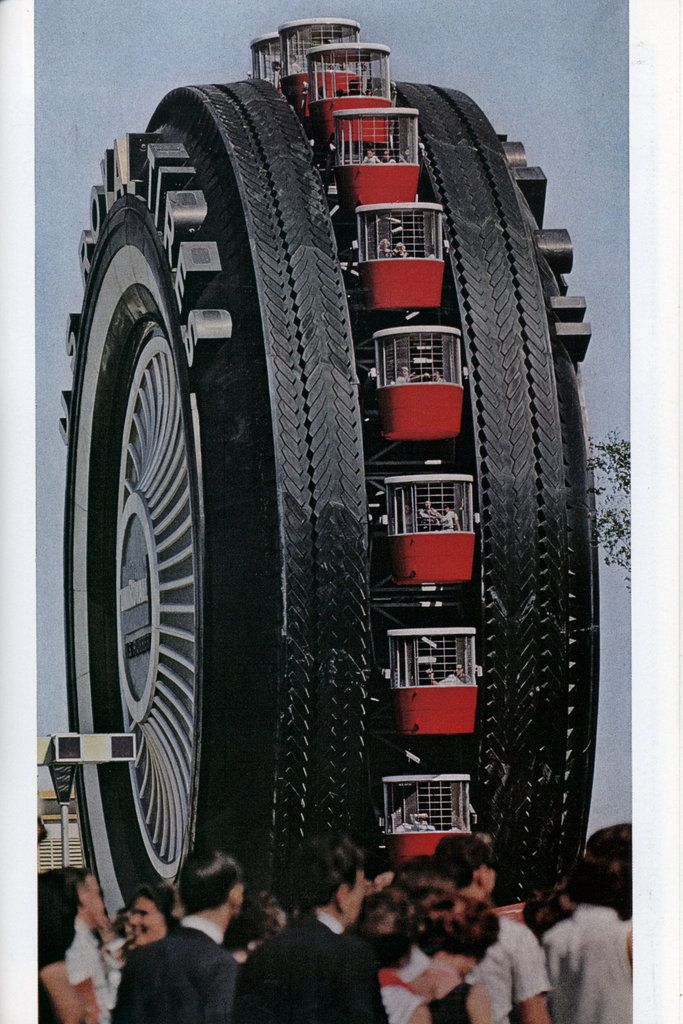The global automotive tire market was valued at $139.18 billion in 2015, and is projected to reach $218.87 billion in 2030, registering a CAGR of 3.8%.
The COVID-19 impact has adversely impacted the automotive tire market. The COVID-19 outbreak forced governments across the globe to implement stringent lockdown and ban import–export of essential raw materials items for most of 2020 & few months in 2021. This led to sudden fall in the availability of important raw materials for the automotive tire market. For instance, global total rubber consumption fell by 5.7% in 2020, owing to the COVID-19 pandemic. An increasing impact of COVID-19 led to the closing of other facilities as well that include R&D facilities, distribution channels, supply-demand interactions, retail networks, and other operational areas, which are key to the industry’s future.
In addition, the sale of automotive tires is inextricably related to vehicle manufacturing and distribution operations. The pandemic has had a significant impact on the automotive tire market due to decreasing automotive sales as well as manufacturing around the world.
Automotive tire is the circular vehicle component made of rubber that is used to cover the wheel’s rim externally. The major function of the tire is to protect the wheel rim and offer tractive force between the road surface and the vehicle. Since it is manufactured from rubber, it also provides a flexible cushion, thereby reducing the impact of the vibrations and absorbs the shock of the vehicle. Rubber tire consists of tread, jointless cap piles, beads, and other materials, which include synthetic rubber, carbon black, and fabric. There is an exponential increase in the demand for tires, due to rise in demand for vehicle production to cater to the surge in requirement of vehicles across all segments. Thus, the tire demand is ultimately governed by automobile production.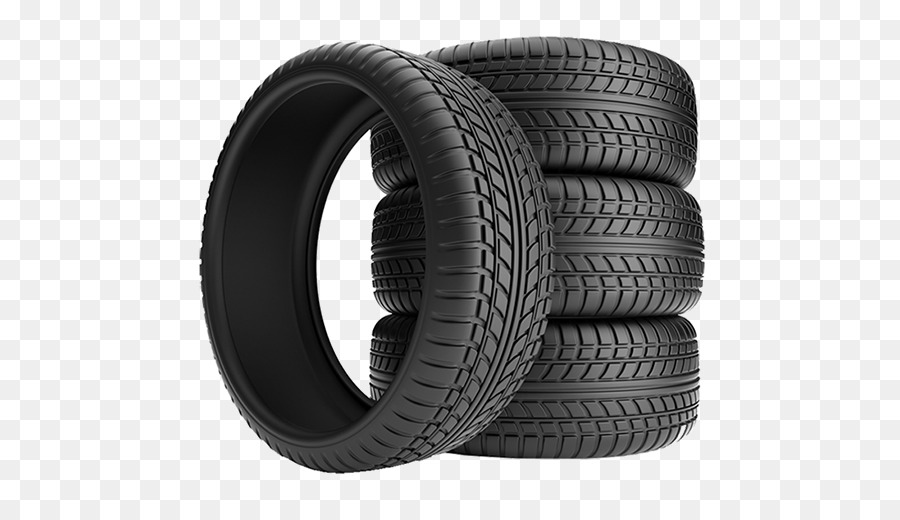
The global automotive tire market is driven by increase in vehicle production in developing countries and rise in competition among tire manufacturers. However, factors such as volatile prices of raw materials and increase in demand for tire remolding are expected to hamper the growth of the market. Further, advancement in technology and fuel efficiency and rise in adoption of electric vehicles is expected to create numerous opportunities for the expansion of the market.
Get more information on this report : Request Sample Pages
The automotive tire market is segmented on the basis of season type, vehicle type, rim size, distribution channel, load index and region. By season type, it is divided into summer, winter and all-season tires. By vehicle type, it is divided into passenger car, commercial vehicle, and electric vehicle. The commercial vehicles segment is further divided into light & heavy commercial vehicles. By rim size, the market is categorized into less than 15 inch, 15 to 20 inch, and more than 20 inch. By distribution channel, it is bifurcated into OEM and aftermarket. On the basis of load index, it is divided into up to 100, and above 100. By region, the market is analyzed across North America, Europe, Asia-Pacific, and LAMEA.
By rim size, the market is categorized into less than 15 inch, 15 to 20 inch, and more than 20 inch. By distribution channel, it is bifurcated into OEM and aftermarket. On the basis of load index, it is divided into up to 100, and above 100. By region, the market is analyzed across North America, Europe, Asia-Pacific, and LAMEA.
The global key players profiled in the automotive tire market report are Apollo Tyres Ltd, Bridgestone Corporation, CEAT Limited, Continental AG, Hankook & Company Co., Ltd., JK Tyre & INDUSTRIES LTD., Michelin, MRF Limited, Nokian Tyres PLC, Pirelli & C. S.p.A, Sailun Group Co., Ltd., Salsons Impex Pvt. Ltd, Shandong Linglong Group Co. Ltd., Sumitomo Rubber Industries, Ltd., The Goodyear Tire & Rubber Company, The Yokohama Rubber Co., Ltd., Triangle Tire Co., Ltd., Toyo Tire Corporation, Wanli Tire Co., Ltd., and Zhongce Rubber Group Co., Ltd.
Get more information on this report : Request Sample Pages
Increase in vehicle production in developing countriesAutomobile demand in developing countries such as India, Brazil, and ASEAN countries, is expected to grow significantly in the coming years as a result of urbanization and increased industrial activity. Owing to growing demand for automobiles in these countries, manufacturers are increasingly establishing manufacturing plants and expanding their presence in these countries. Developing nations have observed an increase in the production of automobiles owing to factors such as favorable government policies, increasing GDP, and rising consumer spending. For instance, various incentives such as 200% for engaging in vocational activities and tax incentives of up to 300% for conducting R&D have been offered by the governments of Southeast Asian countries to boost the automotive industry in the region.
Owing to growing demand for automobiles in these countries, manufacturers are increasingly establishing manufacturing plants and expanding their presence in these countries. Developing nations have observed an increase in the production of automobiles owing to factors such as favorable government policies, increasing GDP, and rising consumer spending. For instance, various incentives such as 200% for engaging in vocational activities and tax incentives of up to 300% for conducting R&D have been offered by the governments of Southeast Asian countries to boost the automotive industry in the region.
Emerging companies and market leaders in many industries throughout emerging nations, such as e-commerce, the food industry, and others, have boosted demand for delivery and transportation solutions, therefore boosting the production of commercial vehicles such as trucks, tractors, and trailers even further. Increased manufacturing of heavy-duty vehicles raises demand for automotive tires significantly.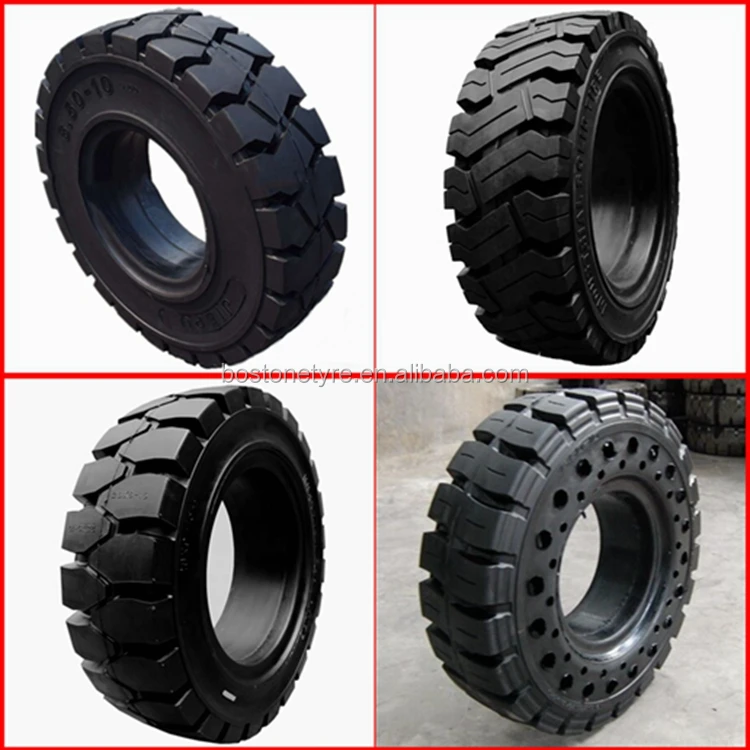 Furthermore, the growing demand for passenger vehicles in developing countries has considerably increased automobile production in the area. Customers in developing countries such as India, Brazil, and others, have shown considerable growth in their adoption of sedans, SUVs, and heavy commercial vehicle resulting in increased demand for automotive tires in the region. Vehicle production in emerging nations is anticipated to increase considerably in the future, providing an opportunity for the automotive tire market to witness growth.
Furthermore, the growing demand for passenger vehicles in developing countries has considerably increased automobile production in the area. Customers in developing countries such as India, Brazil, and others, have shown considerable growth in their adoption of sedans, SUVs, and heavy commercial vehicle resulting in increased demand for automotive tires in the region. Vehicle production in emerging nations is anticipated to increase considerably in the future, providing an opportunity for the automotive tire market to witness growth.
Get more information on this report : Request Sample Pages
Increase in demand for tire remoldingThe process of replacing the tread on worn tires is known as remolding or retreading. It is recognized as the tire re-manufacturing process and is also known as recap or remold. When compared to the manufacturing of a new tire, the re-manufacturing process of the tire saves a significant amount of material.
As a result, the materials for this procedure are less expensive. Furthermore, compared to building a new one, it saves a significant amount of money on tire and material costs. As the labor and costs are much lower, retreading is environmentally friendly and far less expensive than purchasing new tires. Single tire can be retreaded up to ten times, extending its service life and saving significant energy and time in the manufacturing process, all while lowering landfill waste and carbon emissions. Owing to these benefits, the savings can be significant for businesses with large fleets of vehicles. Over the years, the tire manufacturing industry has made significant progress all over the world. Premium technologies are used to produce high-quality tires that will perform flawlessly not only in their first life, but also in their second, third, and even fourth.
Get more information on this report : Request Sample Pages
Moreover, in tire retreading industry, the use of stronger tire casings, improved re-manufacturing procedures, and high-quality rubber compounds is increasing significantly for tire remold. Retreading directly reduces aftermarket costs. A significant increase in tire prices due to high production costs has accelerated the demand for retreaded tires. Retreading gives tires a new lease on life, and it can be done two to three times depending on the condition of the tire. This boosts the retreading tire market while slowing the growth of the automotive tire market.
Retreading directly reduces aftermarket costs. A significant increase in tire prices due to high production costs has accelerated the demand for retreaded tires. Retreading gives tires a new lease on life, and it can be done two to three times depending on the condition of the tire. This boosts the retreading tire market while slowing the growth of the automotive tire market.
Most manufacturing companies are using automation to increase productivity and profitability due to rapid technological advancements. The automotive tire market is expected to witness growth as a result of technological advancements in the global tire industry, such as the introduction of rimless tires, green tires, and the use of lightweight elastomers and metals such as alloys and carbon fiber or composites such as manganese bronze and nickel aluminum bronze to manufacture tires.
Get more information on this report : Request Sample Pages
In addition, major tire manufacturers are employing nanotechnology and other innovations or software to create a variety of advanced tire types.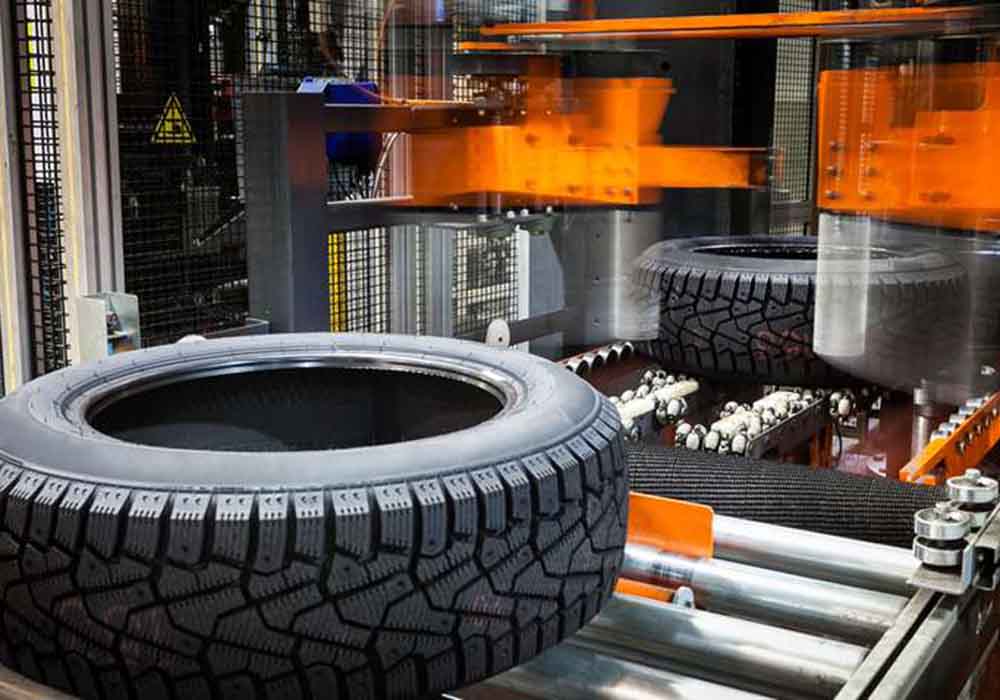 For instance, Bridgestone Tires, a leading tire, and rubber manufacturer uses Contact Area Information Sensing (CAIS), which collects and analyses the tire contact area to sense road conditions. Shared and autonomous vehicles will shape the future of mobility.
For instance, Bridgestone Tires, a leading tire, and rubber manufacturer uses Contact Area Information Sensing (CAIS), which collects and analyses the tire contact area to sense road conditions. Shared and autonomous vehicles will shape the future of mobility.
Ride-sharing and ride-hailing are becoming more popular, supporting urban mobility as well as cargo and service transportation. Bridgestone, Michelin, Goodyear, and Continental, among others, are testing software platforms and Internet of Things (IoT)-connected sensors to monitor and evaluate tire quality. Tire manufacturers are concentrating their efforts on the development of smart tires that rely on IoT connectivity to provide improved safety, enhanced fuel efficiency, lower maintenance costs and efforts, and longer tire life. All of these elements are projected to open plenty of new opportunities for the market's expansion.
2030
Asia-pacific
North America
Europe
Lamea
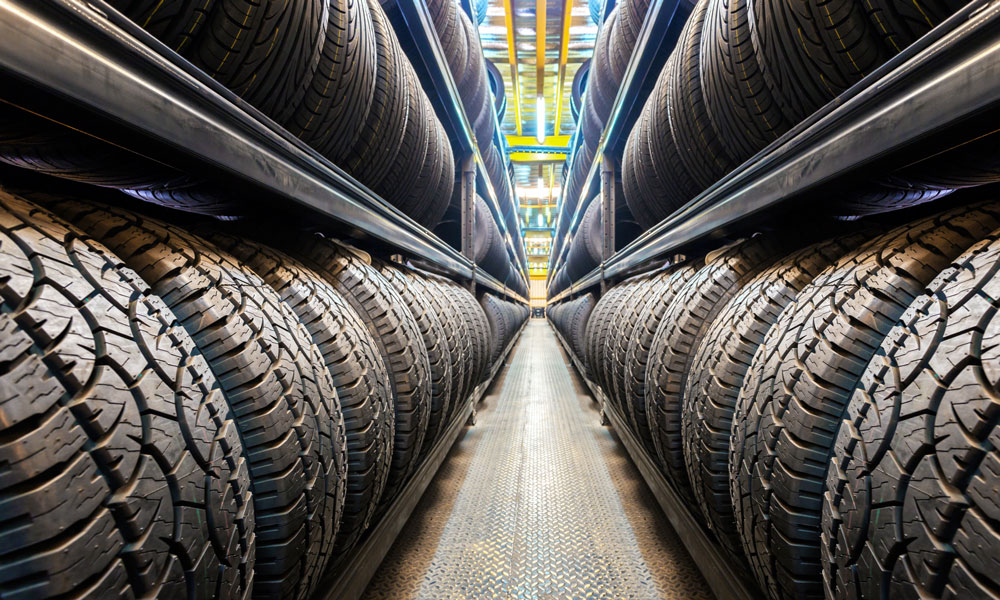 5% during 2021-2030.
5% during 2021-2030.Get more information on this report : Request Sample Pages
COVID-19 Impact Analysis
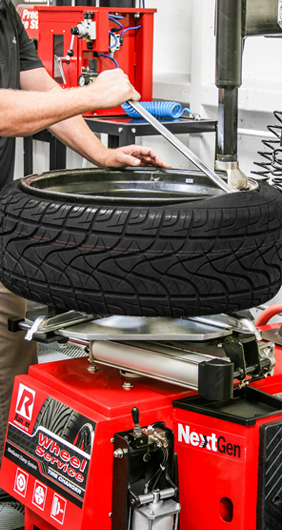 Nationwide lockdown forced parts manufacturing facilities to partially or completely shut down their operations. The pandemic has had a significant impact on the automotive tire market due to decreasing automotive sales as well as manufacturing around the world.
Nationwide lockdown forced parts manufacturing facilities to partially or completely shut down their operations. The pandemic has had a significant impact on the automotive tire market due to decreasing automotive sales as well as manufacturing around the world.Key Benefits For Stakeholders

Automotive Tire Market Report Highlights
| Aspects | Details |
|---|---|
| By Season Type |
|
| By Rim Size |
|
| By Vehicle Type |
|
| By Region |
|
| By KEY PLAYERS |
|
| Study Period: | 2018-2027 |
| Base Year: | 2021 |
| Fastest Growing Market: | Asia-Pacific |
| Largest Market: | Asia-Pacific |
| CAGR: | >3 % |
The automotive tires market was valued at USD 105 billion in 2021, and it is anticipated to reach USD 115 billion by 2027, at a CAGR of more than 3% during the forecast period.
The COVID-19 pandemic had a significant effect on the automotive tires market directly in the short term as the production and sales of new vehicles witnessed a decline in 2020. Moreover, owing to restrictions, vehicle owners reduced the amount of driving resulting in delayed visits for maintenance or tire replacement. However, with the projected exponential increase in vehicle sales over the forecast period, the market is expected to be revived economically.
The growing focus on fuel economy, rising demand for convenience, and high maintenance or replacement costs of conventional tires are driving the growth of the automotive tires market. Another factor that is responsible for the growth of the industry is the adoption of cutting-edge manufacturing technology by OEMs to offer product differentiation through sustainability, durability, and affordability.
The demand for retreaded tires is increasing at a significant rate. The retreading of tires helps reduce the operating cost significantly in the aftermarket as it prevents the complete replacement of tires and is, thereby, a cost-effective option. The casings can help provide multiple life cycles, resulting in significant cost savings, especially for commercial fleet operators.
The casings can help provide multiple life cycles, resulting in significant cost savings, especially for commercial fleet operators.
Tire makers are turning to green energy in their production as companies are working to achieve carbon neutrality by 2050, with investments in the direction of zero-carbon technology, energy efficiency, and green energy. For instance, in February 2021, Michelin Group announced that it is working toward making its tires 100% sustainable by 2050. For this, Michelin partnered with various organizations like Axens, IFP Energies Nouvelles, Pyrowave, Carbios, Enviro, and BlackCycle.
The Automotive Tires Market is Segmented by Tire Type (Winter Tires, Summer Tires, and Other Tire Types), by Application (On-the-Road and Off-the-Road), by Vehicle Type (Passenger Cars and Commercial Vehicles), End User (OEM and Aftermarket), and by Geography (North America, Europe, Asia-Pacific, South America, and Rest of the World). The report offers market size and forecasts for Automotive Tires in terms of value (USD billion) for all the above segments.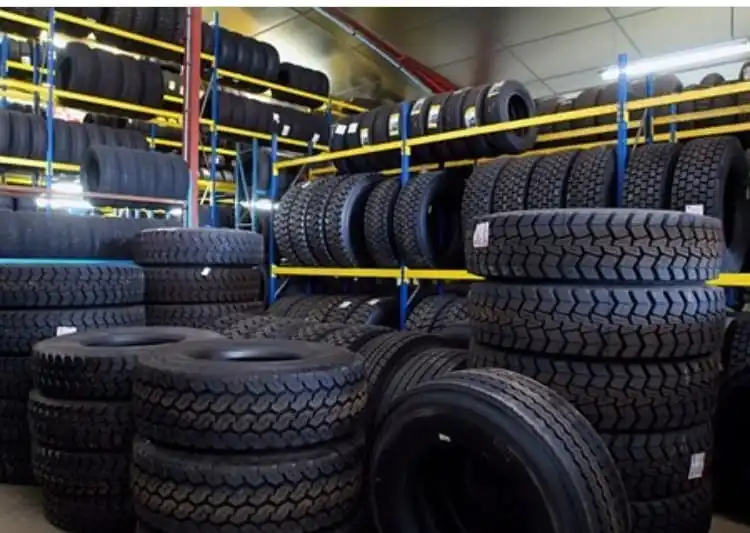
| By Tire Type | |
| Winter Tires | |
| Summer Tires | |
| Other Tire Types |
| By Application | |
| On-the-Road | |
| Off-the-Road |
| By Vehicle Type | |
| Passenger Cars | |
| Commercial Vehicles |
| By End User | |
| OEM | |
| Aftermarket |
| Geography | |||||||
| |||||||
| |||||||
| |||||||
|
Report scope can be customized per your requirements.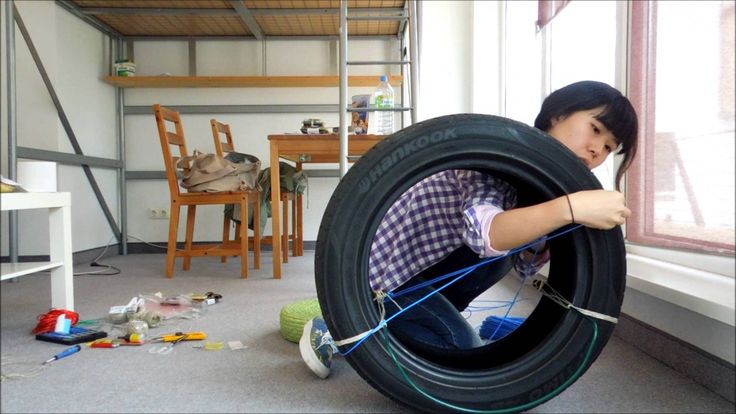 Click here.
Click here.
The automotive high-performance tires market is expected to witness high growth during the forecast period. The growth is driven by numerous factors, such as the increasing inclination of people toward sports like car and bike racing and extreme terrain rallies. OEMs use these events as a platform to market their products and increase brand visibility. Increasing disposable income of customers living in emerging economies is leading to a growth in demand for higher-capacity vehicles such as SUVs and crossover vehicles. Rapid infrastructure development in developing economies, especially India and China, has caused a growth in sales of commercial vehicles and construction vehicles. The replacement and aftermarket tire market presents a huge opportunity for vehicle manufacturers to generate revenue. Customers are choosing high-performance tires over traditional rubber tires because rubber tires are subjected to wear and tear easily.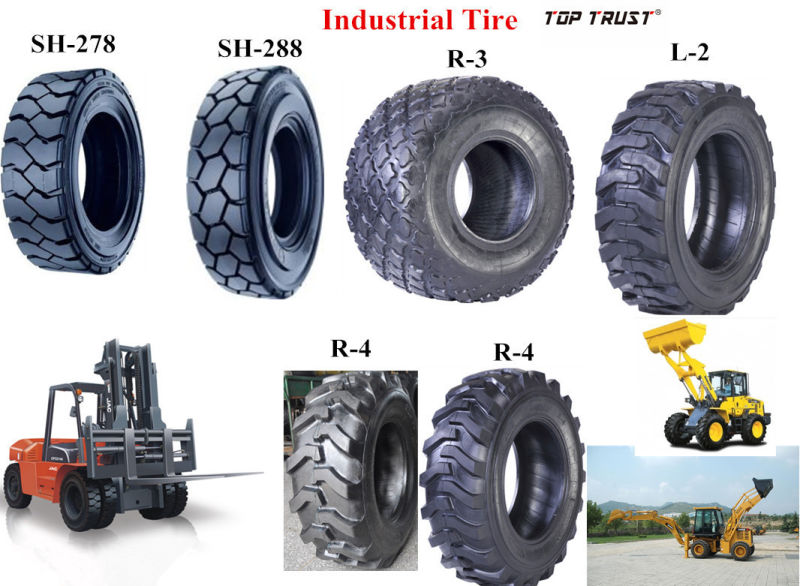
Europe has shown a strong demand for high-performance tires due to the presence of a large number of OEMs such as BMW, Volkswagen, Ferrari, Daimler, and Renault. These OEMs regularly participate in motorsports events held in the continent and showcase their new line of innovative products that cater to customers’ need for safe, cleaner, and cost-effective vehicles and components.
Various major players in the market are investing in new products for high-performance tires. For instance, in March 2021, Versalis, Eni's chemical company, and Bridgestone EMIA signed a joint development agreement for the research, production, and supply of synthetic rubber and new elastomer grades, including styrene-butadiene rubber (SBR), for the production of high-performance tires.
To understand key trends, Download Sample Report
The world’s largest automotive market shrank for a third straight year as Chinese car sales declined by more than 6% in 2020.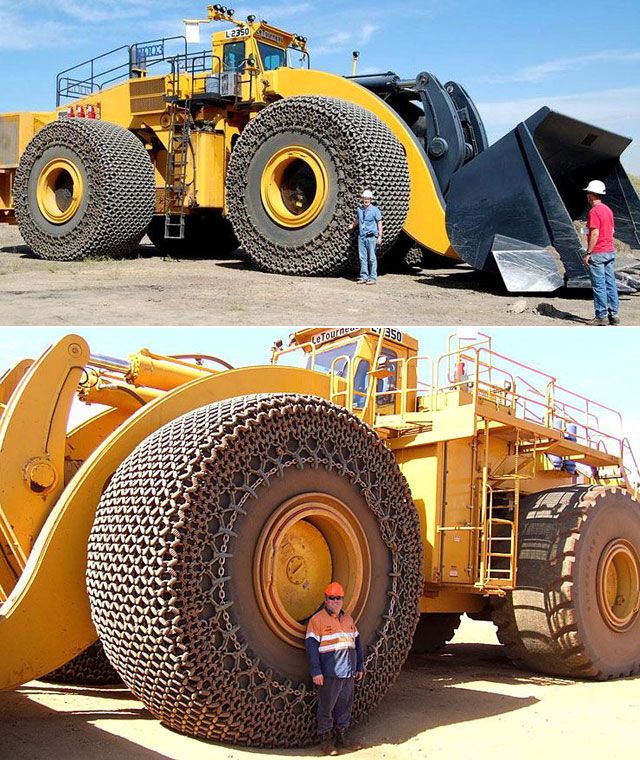 Automakers in China sold 19.29 million passenger vehicles in 2020. Whereas in April 2021, the China Association of Automobile Manufacturers (CAAM) announced that according to aggregated data of sales figures for major companies, cumulative sales from January to March reached 6.344 million units.
Automakers in China sold 19.29 million passenger vehicles in 2020. Whereas in April 2021, the China Association of Automobile Manufacturers (CAAM) announced that according to aggregated data of sales figures for major companies, cumulative sales from January to March reached 6.344 million units.
India is another major market in the region, with its passenger vehicle sales improving after the third quarter of the year, reaching 3,10,294 units in October 2020 compared to 2,71,737 units in the same month last year, a 14.19% growth. As per the Federation of Automobile Dealers Associations (FADA), passenger vehicle sales in November 2020 were 2,91,001 units compared to 2,79,365 units in November 2019, with a 4.17% growth.
According to the "2020 Domestic Demand for Automobile Tires" released by the Japan Automobile Tyre Manufacturers Association (JATMA), the sales of new automobile tires for vehicles in 2020 were 36,439,000 down, a 17% decrease year-to-year. The first half of 2020 was affected due to the influence of COVID-19; however, demand for new vehicle tires began to recover in the second half of the year due to strong new vehicle productions.
Major players in the region are introducing new tires to gain an advantage over their competitors. March 2021, Apollo Tires introduced Apterra Cross tires for the compact SUV segment in India. The Apterra Cross tires are an outcome of the company's research to understand the exact usage patterns of CSUV. The new range of tires is being launched in India, with plans to introduce it in the ASEAN and SAARC markets later.
To understand geography trends, Download Sample Report
The global tires market is mid-level concentrated with major manufacturers like Michelin, Bridgestone, Pirelli, and others catering to the tire needs of both passenger cars and commercial vehicles. However, in the case of regional and highly concentrated Asian automotive markets like China, India, and Indonesia, the market is dominated by local tire manufacturers.
The demand for high-quality and safe tires was the main reason for the automakers and end-users to prefer products from renounced manufacturers over smaller regional players. Furthermore, these big players have increased their R&D spending exponentially to integrate innovation with performance excellence. This, in turn, has resulted in the production of premium quality tires for off-road and on-road applications.
Furthermore, these big players have increased their R&D spending exponentially to integrate innovation with performance excellence. This, in turn, has resulted in the production of premium quality tires for off-road and on-road applications.
1. INTRODUCTION
1.1 Study Assumptions
1.2 Scope of the Study
2. RESEARCH METHODOLOGY
3. EXECUTIVE SUMMARY
4. MARKET DYNAMICS
4.1 Market Drivers
4.2 Market Restraints
4.3 Industry Attractiveness - Porter's Five Forces Analysis
4.3.1 Threat of New Entrants
4.3.2 Bargaining Power of Buyers/Consumers
4.3.3 Bargaining Power of Suppliers
4.3.4 Threat of Substitute Products
4. 3.5 Intensity of Competitive Rivalry
3.5 Intensity of Competitive Rivalry
5. MARKET SEGMENTATION
5.1 By Tire Type
5.1.1 Winter Tires
5.1.2 Summer Tires
5.1.3 Other Tire Types
5.2 By Application
5.2.1 On-the-Road
5.2.2 Off-the-Road
5.3 By Vehicle Type
5.3.1 Passenger Cars
5.3.2 Commercial Vehicles
5.4 By End User
5.4.1 OEM
5.4.2 Aftermarket
5.5 Geography
5.5.1 North America
5.5.1.1 United States
5.5.1.2 Canada
5.5.1.3 Rest of North America
5.5.2 Europe
5.5.2.1 Germany
5.5.2.2 United Kingdom
5.5.2.3 France
5.5.2.4 Italy
5.5.2.5 Rest of Europe
5.5.3 Asia-Pacific
5. 5.3.1 China
5.3.1 China
5.5.3.2 Japan
5.5.3.3 India
5.5.3.4 South Korea
5.5.3.5 Rest of Asia-Pacific
5.5.4 Rest of the World
5.5.4.1 South America
5.5.4.2 Middle-East and Africa
6. COMPETITIVE LANDSCAPE
6.1 Vendor Market Share
6.2 Company Profiles*
6.2.1 Bridgestone Corp.
6.2.2 Continental Automotive AG
6.2.3 Cooper Tire & Rubber Company
6.2.4 Goodyear Tire & Rubber Company
6.2.5 Hankook Tires Group
6.2.6 Michelin Tires
6.2.7 MRF (Madras Rubber Factory Limited)
6.2.8 Pirelli & C SpA
6.2.9 Apollo Tires
6.2.10 Yokohama Rubber Co. Ltd
6.2.11 JK Tyre & Industries
7. MARKET OPPORTUNITIES AND FUTURE TRENDS
Disclaimer
 Do you want to check out a section wise price list?
Do you want to check out a section wise price list? The Automotive Tires Market market is studied from 2018 - 2027.
The Automotive Tires Market is growing at a CAGR of >3% over the next 5 years.
The Automotive Tires Market is valued at 102 Billion USD in 2018.
The Automotive Tires Market is valued at 122 Billion USD in 2027.
Asia-Pacific is growing at the highest CAGR over 2021- 2026.
Asia-Pacific holds highest share in 2021.
Bridgestone Corp. , Continental AG, Goodyear, Michelin, Pirelli are the major companies operating in Automotive Tires Market.
, Continental AG, Goodyear, Michelin, Pirelli are the major companies operating in Automotive Tires Market.
Please enter a valid email id!
Please enter a valid message!
Download Free Sample Now
First Name
Mr/MsMr.Mrs.Dr.Ms.
Last Name
Your Email
By submitting, you confirm that you agree to our privacy policy
Download Free Sample Now
Your Email
By submitting, you confirm that you agree to our privacy policy
Message
By submitting, you confirm that you agree to our privacy policy
Thank You!
Thank you for your Purchase. Your payment is successful. The Report will be delivered in 24 - 72 hours. Our sales representative will reach you shortly with the details.
Please be sure to check your spam folder too.
Sorry
"Sorry! Payment Failed. Please check with your bank for further details."
Please check with your bank for further details."
2K 7 min. ...
The tire industry has fallen into crisis
Tire production in the world enjoys a reputation as a "reliable business", which simply cannot but attract the attention of investors. The same thing happened in Russia - the growth in the number of cars on Russian roads simply had to lead financiers to think about the amounts spent by motorists to change "bald" tires for brand new treads, summer tires for winter ones, etc.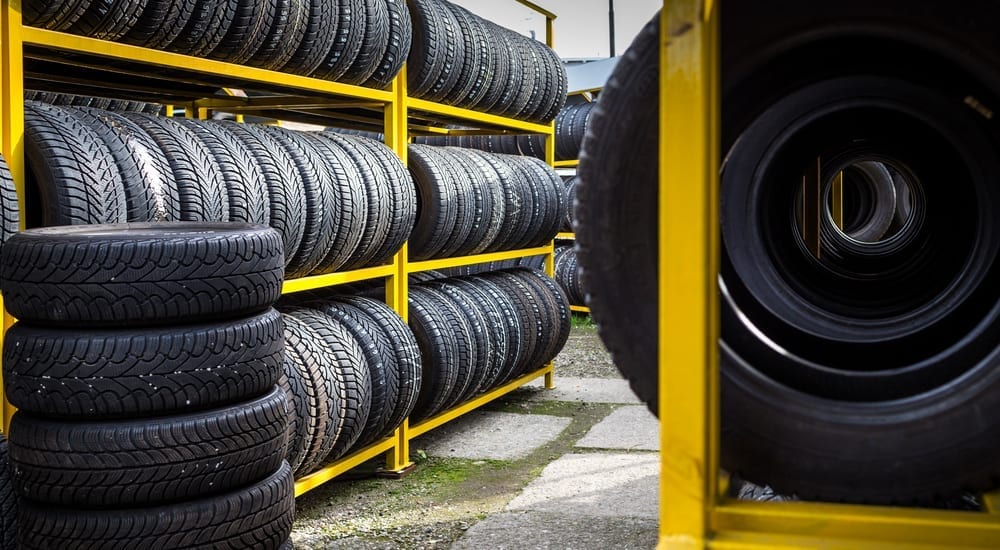 Analysts showed particular optimism at 1999, when the growth of production volumes at tire factories amounted to 18%. Nevertheless, already at the beginning of 2000, minor notes appeared in the harmonious choir of optimists talking about the excellent prospects for the industry - the Russian tire industry approached the threshold beyond which a crisis awaits it.
Analysts showed particular optimism at 1999, when the growth of production volumes at tire factories amounted to 18%. Nevertheless, already at the beginning of 2000, minor notes appeared in the harmonious choir of optimists talking about the excellent prospects for the industry - the Russian tire industry approached the threshold beyond which a crisis awaits it.
No growth
Despite a general improvement in the situation, a number of tire factories suffered losses this year. The overall production growth amounted to 1999 years only 5.8%. At the same time, the forecasts of the Research Institute of the Tire Industry at the end of 1999 were confirmed - growth was ensured by the production of truck tires, which was not a priority for the development of the tire industry. And the production of the main hope of Russian factories, tires for passenger cars, unexpectedly fell. Not much yet - according to the Federal State Statistics Service, by 1.7% (8.25 million units). Significant growth was demonstrated only by the Omskshina group (together with a joint venture with the Czech Matador, about 60%) and the Moscow Tire Plant (24.5%). However, growth was achieved mainly due to the restoration of output volumes to the level that existed before August 1998 years.
Significant growth was demonstrated only by the Omskshina group (together with a joint venture with the Czech Matador, about 60%) and the Moscow Tire Plant (24.5%). However, growth was achieved mainly due to the restoration of output volumes to the level that existed before August 1998 years.
Forecasts of the development of the situation differ: if half a year ago the managers of tire factories demonstrated their intention to conquer 10-15% of the market annually, now their intentions are mainly reduced to maintaining their own market share.
It is noteworthy that there is no obvious reason for the depression in the tire industry. The Russian tire sales market, like the rest of the world, is divided into two parts: the primary market (direct deliveries to car factories) and the secondary market (sales on the retail market) - and each of them is growing. The price situation in the raw materials market is more or less stable. By the middle of 2000, most of the large tire factories found their owners-investors.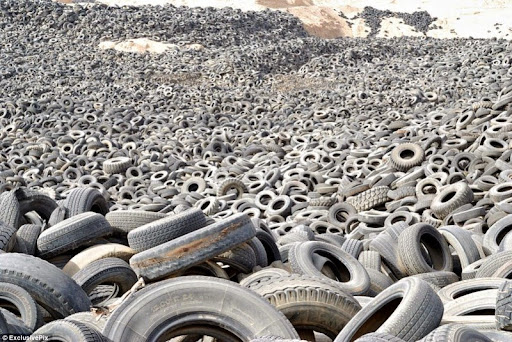 There is practically no expansion of Western competitors - competition with Bridgestone, Michelin, GoodYear, Continental is noticeable only in large cities. But even there, the total share of imported tires in the secondary market does not exceed 20-25%.
There is practically no expansion of Western competitors - competition with Bridgestone, Michelin, GoodYear, Continental is noticeable only in large cities. But even there, the total share of imported tires in the secondary market does not exceed 20-25%.
Nevertheless, there are grounds for pessimism. According to Kommersant's information, the profitability of production at the country's three largest tire plants - Nizhnekamskshina, YaShZ and Omskshina - fell from 13-15% to 5% in six months and, according to unofficial forecasts of managers, will continue to decline. It is probable that the total growth in tire production in 2000 will not exceed 5-6%, and growth in the production of passenger tires - 1-2%. Compared to 18% growth in 1999, this is the beginning of a crisis in the tire industry. It seems that the economic model of broad-based petrochemical holdings implemented by the largest market players — the SIBUR group, the petrochemical holdings of Tatarstan, Volgograd and Siberia — has not been able to solve the problems of tire factories.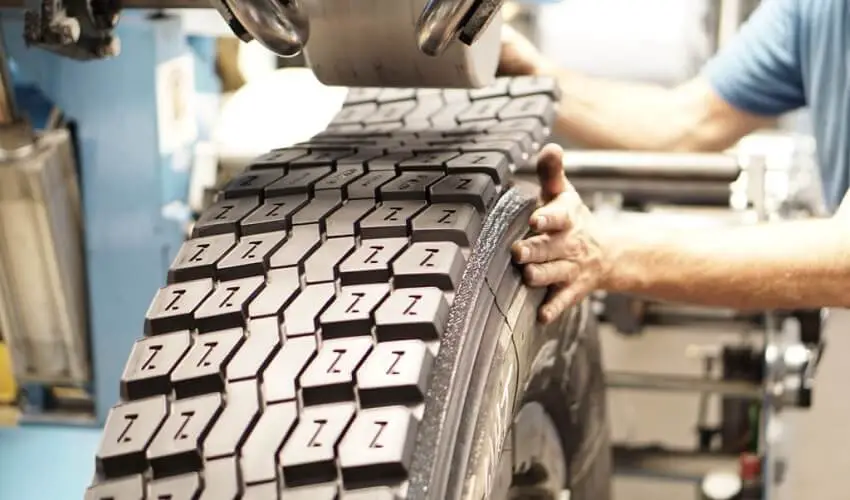
Bus integrators
The strategy of integrating all the resources necessary for the operation of the tire industry was first outlined in the activities of the Rosshina group in 1996. Rosshina's managers were negotiating with a number of rubber producers about joining the group, but failed to create a tire and petrochemical holding, and the group actually collapsed. A little later, a similar story happened to the Neftekhimprom group - it managed to establish control over a number of tire factories, including the Ukrainian Rosava (Bila Tserkva Tire Plant) and Dneproshina. Nevertheless, Neftekhimprom by 1998 also lost a significant number of assets. Nevertheless, the bad experience of the two largest holdings did not frighten the other contenders. By the middle of 2000, the Russian petrochemical industry had firmly established itself in most tire factories in Russia, with more or less success.
The greatest success was achieved by SIBUR, which managed to gain control over two large manufacturers - Omskshina and Yarshina - together controlling a third of the Russian tire market. According to Valery Pisarev, Senior Vice President of SIBUR, the group sees the ultimate goal of creating holdings in the tire industry in vertical integration according to the "from well to counter" scheme. The agreement with YaShZ CEO Nikolai Tonkov (an interview with him is on the same page) allowed SIBUR to coordinate the sales policy of the two tire factories and create the horizontal tire holding SIBUR-shina, which became part of the vertically integrated SIBUR. In the summer, the group included Voronezhsintezkauchuk and a number of companies producing cord threads.
According to Valery Pisarev, Senior Vice President of SIBUR, the group sees the ultimate goal of creating holdings in the tire industry in vertical integration according to the "from well to counter" scheme. The agreement with YaShZ CEO Nikolai Tonkov (an interview with him is on the same page) allowed SIBUR to coordinate the sales policy of the two tire factories and create the horizontal tire holding SIBUR-shina, which became part of the vertically integrated SIBUR. In the summer, the group included Voronezhsintezkauchuk and a number of companies producing cord threads.
In July 2000, there were more "holding builders" - the government of Tatarstan transferred to the management of Tatneft, which belonged to it, a large block of shares in the largest Russian tire manufacturer - Nizhnekamskshina. Thus, the management of Nizhnekamskshina, which managed a controlling stake in the plant, lost its independence. On the other hand, he received money: according to the general director of the plant, Radik Ilyasov, by the end of 2000 the enterprise will open a new line for the production of tires with a capacity of 2 million pieces per year.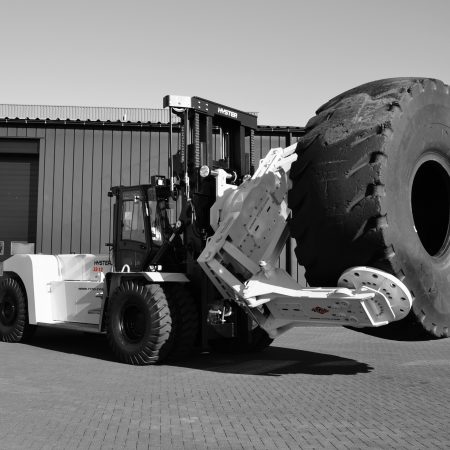
In addition, the building of vertically integrated structures also took place with the participation of smaller enterprises. Thus, the Volgopromkhim group, which controls the technological chain of production of a number of synthetic rubbers in the Volga region, has attempted to restructure the Voltyre tire plant, the largest manufacturer in the region. The Singaporean Amtel group, together with the Moscow Interbank Investment Group (MIG), gained control of the Kirov Tire Plant and actively fought for positions in Krasnoyarskshina. An unexpected interest in the production of raw materials for the tire industry was shown by Sibneft, which in February 2000 seized control of Omsk Sintezkauchuk from SIBUR. According to Kommersant's information, Sibneft's management intends to increase its presence in this market - the Manros group close to it is considered one of the most important players in the market for the supply of raw materials to tire factories.
Prices will fall
The activity of a wide variety of financial groups in the tire market, which includes, in addition to the tire plants themselves, rubber manufacturers, raw materials for its production, chemical fiber and carbon black plants, organic synthesis plants, has led to a paradoxical situation. To date, at least seven groups of companies can be considered serious players in the tire industry - SIBUR, the Tatneft group, Bashkir petrochemists, Volgopromkhim, the Amtel-MIG alliance, Neftekhimprom and Sibneft. At the same time, SIBUR and Tatneft control 70% of the final production of the tire industry, but they cannot refuse to supply raw materials to their own tire factories from competing companies that are themselves interested in creating their own tire production.
To date, at least seven groups of companies can be considered serious players in the tire industry - SIBUR, the Tatneft group, Bashkir petrochemists, Volgopromkhim, the Amtel-MIG alliance, Neftekhimprom and Sibneft. At the same time, SIBUR and Tatneft control 70% of the final production of the tire industry, but they cannot refuse to supply raw materials to their own tire factories from competing companies that are themselves interested in creating their own tire production.
The general problems of the petrochemical business — the multicomponent production of end products and the need to coordinate mutual supplies of raw materials and products from dozens of enterprises — lead to amazing effects in the Russian tire market realities. Thus, almost all managers of tire factories talk about the negative effect of the merger of Tatneft, Tatneftekhim controlled by it, and Nizhnekamskshina. The fact is that the government of Tatarstan has the opportunity to subsidize the production of electricity and the supply of raw materials to Nizhnekamskshina, converting the company's possible losses into debts evenly distributed throughout the oil and petrochemical complex of the republic.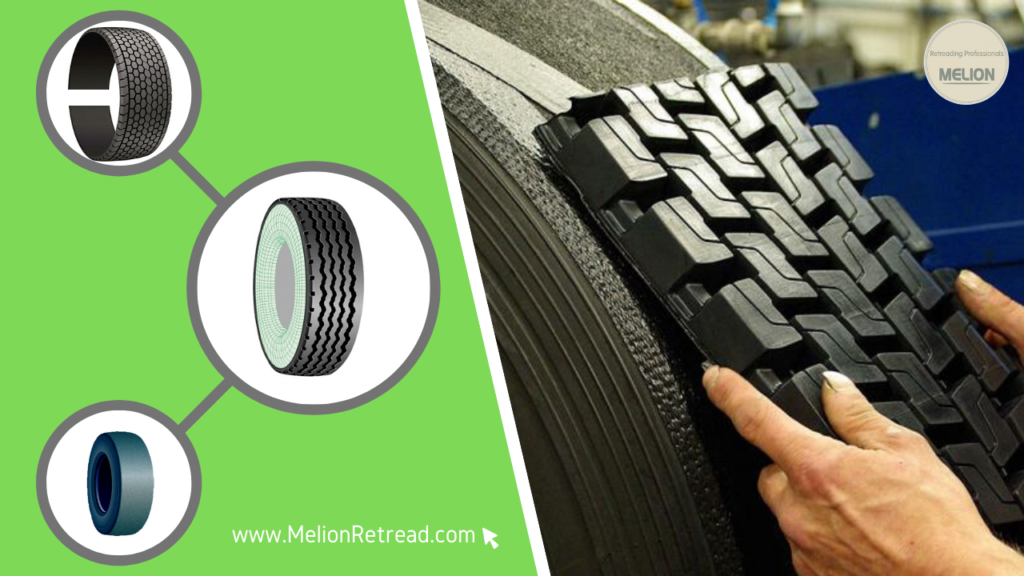 That is why, after the end of the sales season in autumn 2000, most tire factories predict that Nizhnekamskshina will engage in dumping, both in the primary and secondary tire markets. However, Nizhnekamskshina fends off these accusations - from the point of view of the deputy general director for marketing of the Tatar company Alexander Makhotin, YaShZ and Omskshina are engaged in dumping, receiving synthetic rubbers from SIBUR at non-market prices.
That is why, after the end of the sales season in autumn 2000, most tire factories predict that Nizhnekamskshina will engage in dumping, both in the primary and secondary tire markets. However, Nizhnekamskshina fends off these accusations - from the point of view of the deputy general director for marketing of the Tatar company Alexander Makhotin, YaShZ and Omskshina are engaged in dumping, receiving synthetic rubbers from SIBUR at non-market prices.
This is probably not bad for consumers, however, for the tire factories themselves, which, as a rule, do not yet have significant external funding for the reconstruction of production, entry into petrochemical holdings does not yet provide a strategic advantage over competitors, although it increases the stability of work - we note that according to the results of half a year it was the tire factories that were not controlled by large petrochemical groups that seriously "sank".
West will not help
Nevertheless, the concentration in the tire industry does not yet allow the largest tire manufacturers to enter into cooperation with Western competitors.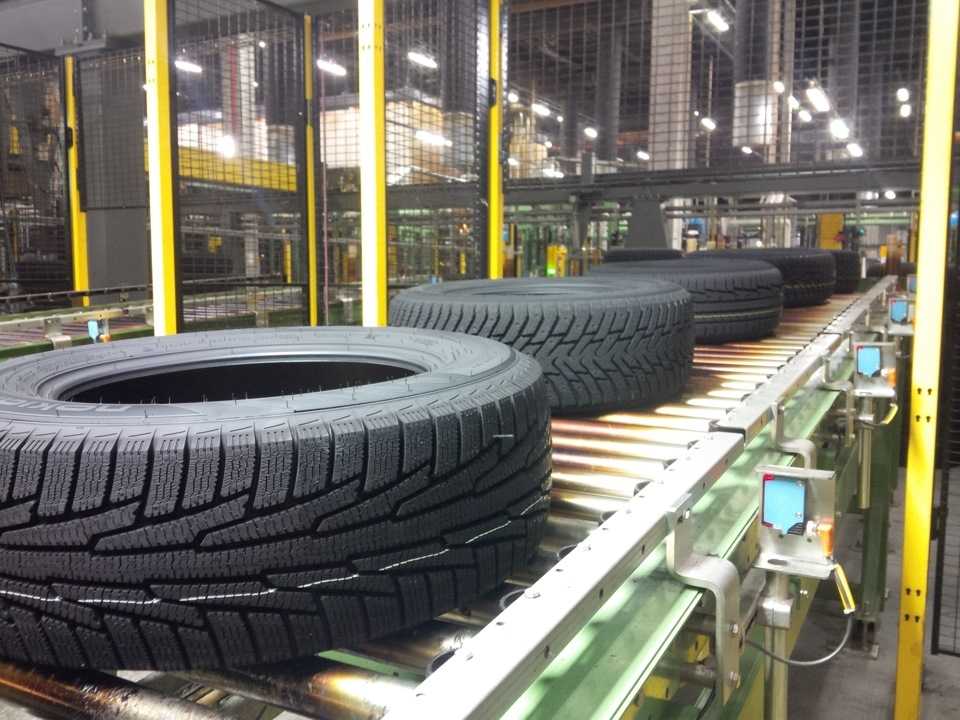 And this is practically the only way to overcome the significant technological gap between Russian and Western tire factories. Over the past six months, only the Moscow Tire Plant has found a strategic partner - according to its general director Vladimir Yezhov, the creation of a joint venture with the German Continental will be completed by the New Year. According to Paul Hendry, head of Continental's Eastern European operations, the concern intends to produce 5 million tires in the joint venture in a few years. The rest of the groups are either questioning the need to create their own production (like, for example, Bridgestone, which relies on licensed production of its own tires in Russia or on order production at existing plants), or intend to build tire factories on their own. For example, Michelin is going to do this - according to the deputy head of the Moscow office of the company Alexei Platov, Michelin intends to build its own plant in the Moscow or Kaluga region. On the whole, the tire giants do not tend to bow down to Russian petrochemical groups, preferring other partners — thus, according to Kommersant's information, the Finnish tire company Nokian is preparing an agreement on cooperation in the tire market with LUKoil, which had previously not been noticed in tire production.
And this is practically the only way to overcome the significant technological gap between Russian and Western tire factories. Over the past six months, only the Moscow Tire Plant has found a strategic partner - according to its general director Vladimir Yezhov, the creation of a joint venture with the German Continental will be completed by the New Year. According to Paul Hendry, head of Continental's Eastern European operations, the concern intends to produce 5 million tires in the joint venture in a few years. The rest of the groups are either questioning the need to create their own production (like, for example, Bridgestone, which relies on licensed production of its own tires in Russia or on order production at existing plants), or intend to build tire factories on their own. For example, Michelin is going to do this - according to the deputy head of the Moscow office of the company Alexei Platov, Michelin intends to build its own plant in the Moscow or Kaluga region. On the whole, the tire giants do not tend to bow down to Russian petrochemical groups, preferring other partners — thus, according to Kommersant's information, the Finnish tire company Nokian is preparing an agreement on cooperation in the tire market with LUKoil, which had previously not been noticed in tire production. . Among other things, we can talk about the construction of a new plant.
. Among other things, we can talk about the construction of a new plant.
Most likely, in the future, the emergence of such industries will lead to the sale of part of the tire factories by the largest petrochemical groups at reduced prices or to the exit of a number of current Russian players from the market. Uralshina, Voronezhshina and Petroshina, which have long lagged behind the industry leaders in terms of production volume, can be considered a real contender for relegation. However, no one can say how the current market leaders will survive the expected depression.
DMITRY Ъ-BUTRIN
The production of car tires is the leading branch of the chemical complex and the end result of the full cycle (chain) of oil refining. Tire factories are high-tech industries, the smooth and well-coordinated work of which depends on many related factors.
The tire industry is linked to other industries such as oil refining and the automotive industry. Players of the latter are the main consumers of tires. In this regard, the location of factories is concentrated in areas with developed oil refining and automotive complexes.
Players of the latter are the main consumers of tires. In this regard, the location of factories is concentrated in areas with developed oil refining and automotive complexes.
The tire industry is one of the largest sources of environmental pollution. Because of this, there is a trend in the world to abandon traditional production processes in favor of more environmentally friendly and safe ones. This requires significant investments aimed at modernizing plants and building new lines.
The global production of car tires continues to grow. Economists and industrialists trace a natural trend in the growth of industry indicators, depending on the success of the automotive industry. In recent years, the production of vehicles has been on the rise. However, any recessions in this segment have a negative impact on the tire industry.
The world's leading tire manufacturers are currently the USA, Japan, China, South Korea, France, Germany, Russia.
Contents:
Natural as well as synthetic materials produced by the chemical and petrochemical industry are used for the production of tires. Among them it is worth highlighting:
Among them it is worth highlighting:
Is the basis for the production of rubber mass. Refers to a group of polymers characterized by water resistance and elasticity. There are natural and synthetic rubber.
The milky sap of rubber plants is used to obtain natural material. Hevea is an evergreen annual that grows in a tropical climate. The largest plantations of this plant are in the countries of South America and Southeast Asia. Also, some other annual shoots are used to obtain natural rubber. Their habitat is regions with a fairly warm climate.
Synthetic rubber is obtained from hydrocarbon raw materials by advanced oil refining. It is this material that is used for the most part in the modern tire industry due to its availability and lower production costs.
Used to improve the performance properties of finished products. In fact, it is soot - a by-product of industrial processing. Recently, global manufacturers are abandoning it in favor of silicic acid, a more environmentally friendly substance.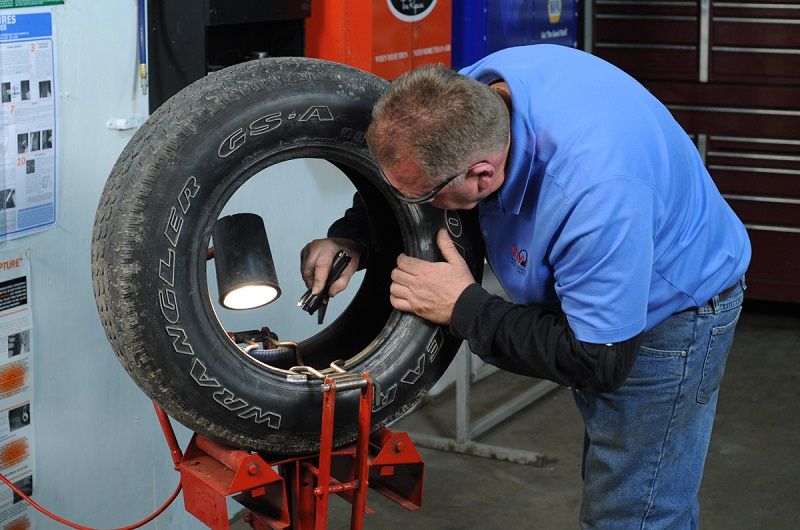
These are various materials used in vulcanization, a chemical process that converts raw rubber (natural or synthetic) into a rubber mass. These include oxides of various metals, derivatives of hydrocarbons, resins, and so on.
Production of automobile rubber is a complex technological process consisting of several successive stages.
Production here:
It is made by superimposing the components of the future product on each other. For this, a special assembly drum is used.
Essential for obtaining the desired performance properties. It is carried out on special equipment (vulcanizer) by injecting compressed steam into the workpiece, containing vulcanizing agents and catalysts.
A suitable press is used for this. This step completes the tire manufacturing process.
Tread shaping
Automotive rubber production is well developed in the Russian Federation. This is explained both by the availability of the necessary raw materials and production base, and by the expanded consumer market.
Thus, according to statistics, in 2018, more than 60 million tires were produced in Russia. Among them, for passenger vehicles - 49 million. Despite the fact that production shows stable growth, it does not cover domestic needs, and therefore about 35 million tires were imported. Basically, Russia buys them from the CIS countries.
Please note that the above does not apply to truck tires. Its production fully covers domestic needs and provides a certain share of exports abroad.
The world's first tire was invented in 1846 by British scientist Robert Thomson.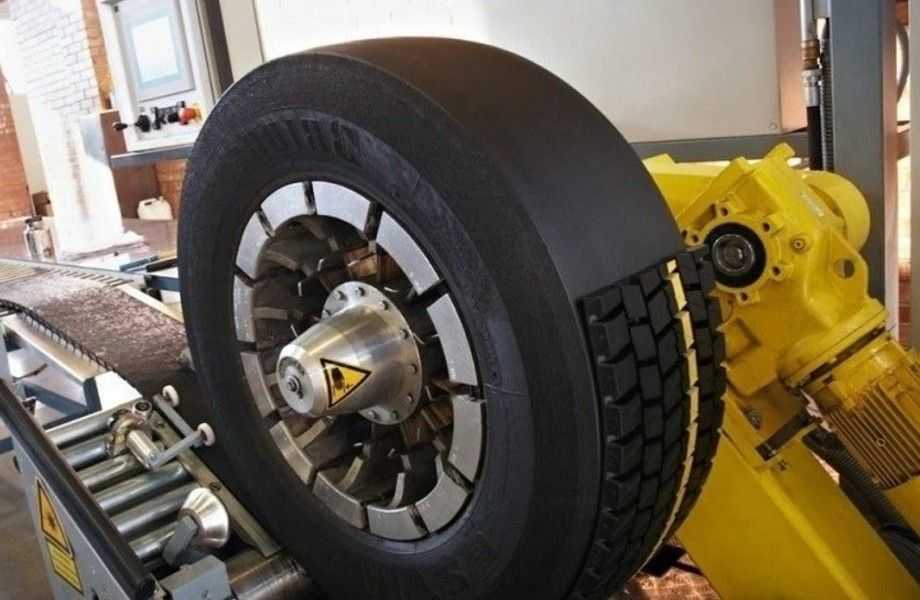 These were several interconnected canvases of canvas impregnated with rubber, obtained from hevea juice.
These were several interconnected canvases of canvas impregnated with rubber, obtained from hevea juice.
The development of the tire industry began in 1895, when mechanical engineering began to take shape. A little later, the vulcanization process was invented. In the Soviet Union, tire production began in the early 1930s.
Until the middle of the 20th century, natural rubber served as the main raw material in this industry. With the development of oil refining, synthetic polymers gradually began to displace it.
By 1990, the domestic tire industry had achieved its greatest growth. After the collapse of the Soviet Union, production was significantly reduced. This is due to the crisis in the automotive industry. In 2000, rubber production in the country began to increase thanks to foreign investment.
Today the industry is developing successfully. In the Russian Federation, both domestic producers and foreign ones operate, which have located localized production facilities in a number of regions.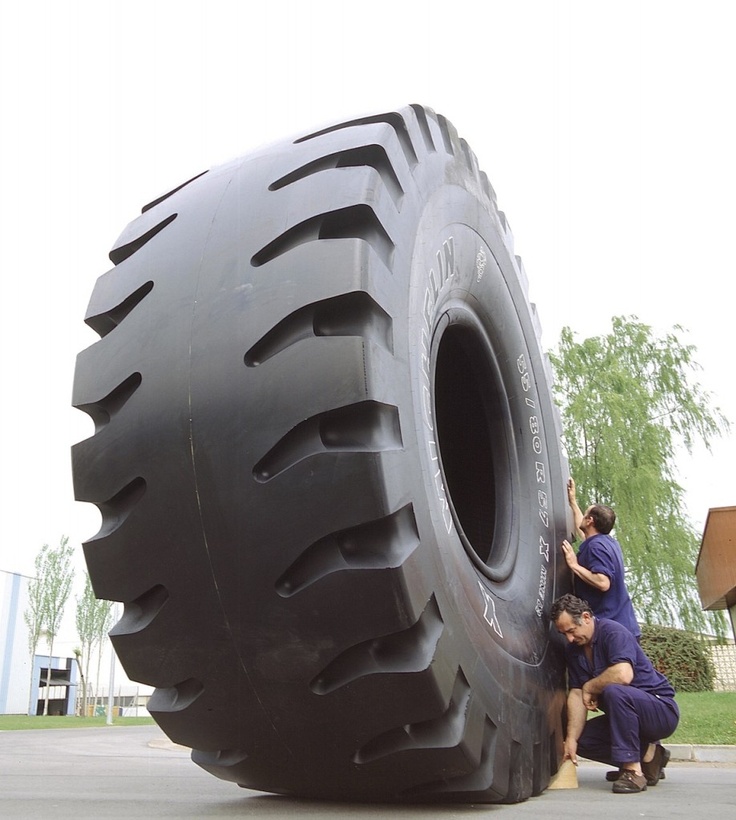 The main task is to increase production volumes to fully meet domestic demand.
The main task is to increase production volumes to fully meet domestic demand.
Among the largest domestic manufacturers, it is worth highlighting:
Foreign manufacturers with factories in Russia:
Other companies operating in this industry are presented in the Tire factories section.
Subscribe to us in Telegram, Yandex Zen and Vkontakte.
12/13/2019
Upgraded filtering baffle made of elastically stretched permeable wire material and its properties
One of the complicating factors of artificial lift oil production from wells is the removal of solid particles - proppant and sand - with well fluid to the pumping equipment.